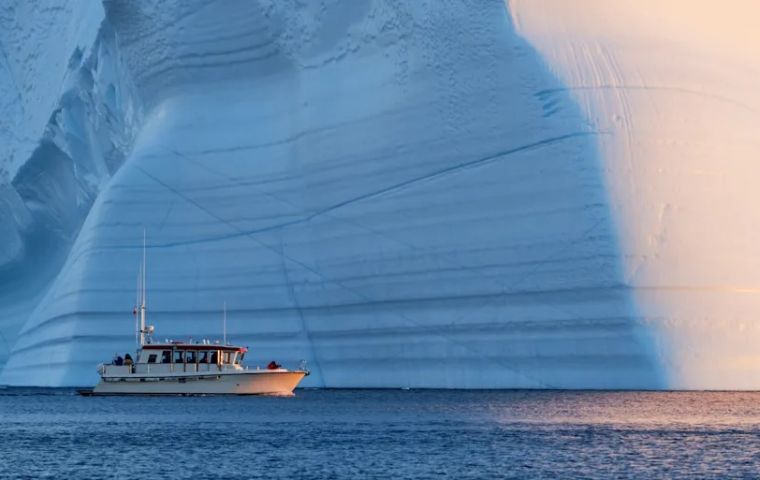MercoPress. South Atlantic News Agency
Ship anchor damaging sea fauna in Antarctica reported
 Anchoring has been long overlooked, the NGO said
Anchoring has been long overlooked, the NGO said A 2022-2023 study published in Frontiers in Conservation Science provides the first documented evidence of ship anchor damage to Antarctica’s seafloor, revealing severe impacts on fragile marine ecosystems.
“This is the first time that the effects of ship anchoring and the damage caused to chains in Antarctic waters have been documented,” explained the scientist in charge of the study undertaken by the ocean exploration and conservation NGO Venice, California, based Kolossal NGO. “At the disturbed sites, there is hardly any marine life,” the researchers also warned. “Activities in Antarctica have many strict regulations around conservation. However, ship anchoring is almost completely unregulated,” said Kolossal founder Matthew Mulrennan.
“The images showed alterations of the seabed and marine life in the places where the ships had anchored. The seabed substrate showed grooves, furrows, and mud deposits from the removal of the anchors,” it was explained.
“Anchoring is probably the most overlooked ocean conservation problem in terms of altering the global seafloor; it is on par with the damage caused by bottom trawling,” Mulrennan concluded.
Conducted by an international team, the research focused on areas like Yankee Harbour, where cruise ship anchors and chains have caused visible destruction, including crushed sponge colonies, scoured seabeds, and reduced marine biodiversity. Notably, giant volcano sponges—potentially 15,000 years old—were found near damaged sites.
The study recorded 62 hours of 4K underwater footage across 36 surveys, showing clear scour marks, sediment deposits, and a stark contrast between healthy and disturbed areas.
During the 2022-2023 tourism season, over 70,000 visitors arrived on 70 vessels, with at least 195 ships (tourism, research, fishing, and yachts) anchoring in shallow waters up to 82.5 meters deep. In March 2023 alone, eight vessels at Yankee Harbour impacted at least 1,600 meters of seafloor.
Antarctic marine life, including sponges, Antarctic sun stars, and soft corals, grows slowly and may take over 100 years to recover due to the region’s extreme conditions.
Despite strict conservation regulations, anchoring remains largely unregulated. Researchers propose solutions like permanent moorings, designated anchoring zones, dynamic positioning systems, and protected no-anchor areas, alongside better tracking of anchoring events.
With tourism booming and climate change reducing sea ice, the study warns that without urgent regulation, these ancient ecosystems face irreversible loss.




Top Comments
Disclaimer & comment rulesCommenting for this story is now closed.
If you have a Facebook account, become a fan and comment on our Facebook Page!